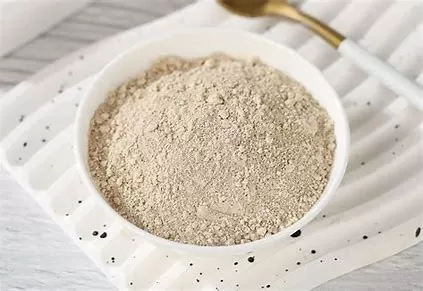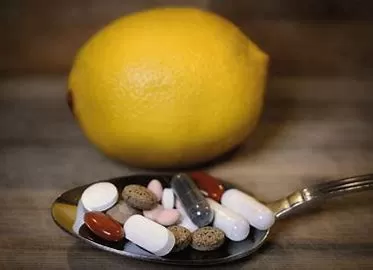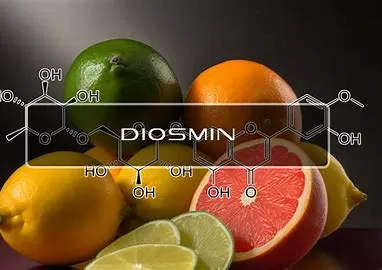- 0086-571-85302990
- sales@greenskybio.com
The Power Duo: Understanding Diosmin and Hesperidin
2025-04-07

In the world of natural health supplements and therapeutic agents, certain compounds rise to prominence due to their potent benefits. Diosmin and Hesperidin are two such substances, often mentioned together due to their complementary effects and similar sources. These bioflavonoids have garnered attention for their roles in promoting vascular health and supporting various bodily functions. This article delves into the nature of Diosmin and Hesperidin, exploring their origins, mechanisms, applications, and the scientific backing behind these promising compounds.
Origins and Sources:
Both Diosmin and Hesperidin belong to a family of compounds known as flavonoids, which are naturally occurring in various plants. These compounds play a significant role in plant pigmentation, growth, and resistance to pathogens. Humans often benefit from flavonoids through dietary consumption, as they boast a range of pharmacological properties.
Diosmin is a compound that is found primarily in citrus fruits. While it occurs naturally, diosmin used in supplements is often derived from hesperidin. Hesperidin, closely related, is abundant in oranges, lemons, and other citrus fruits, notably in their peels. These compounds are extracted in concentrated forms for medicinal use, offering substantial health benefits that are otherwise difficult to achieve from natural consumption alone.

Mechanisms of Action:
Diosmin and hesperidin are renowned for their antioxidant and anti-inflammatory properties. They operate as vascular protectants by enhancing the tone and resilience of veins and tiny blood vessels known as capillaries. Their dual action includes improving blood flow and reducing vascular permeability, which helps prevent blood leakage and swelling.
One fundamental action of these compounds is their ability to scavenge free radicals, reducing oxidative stress within the body. By minimizing oxidative damage, they help maintain the structural integrity of veins and other tissues, which is crucial for overall cardiovascular health. Furthermore, diosmin is known to increase lymphatic drainage, which plays a role in reducing edema or tissue swelling.

Applications in Vascular Health:
The primary therapeutic application of diosmin and hesperidin is in the management of chronic venous insufficiency (CVI), a condition characterized by poor blood flow in the veins, usually of the legs. Sufferers may experience symptoms such as varicose veins, swelling, pain, and skin changes. Diosmin and hesperidin, often combined in medicinal formulations, improve venous tone, enhance circulation, and alleviate these symptoms.
Apart from CVI, these compounds are also utilized to address hemorrhoids, which are swollen veins in the rectal area. Diosmin and hesperidin reduce the inflammation and discomfort associated with hemorrhoids, speeding up the recovery process and providing relief from pain and itching.

Scientific Backing and Research:
Numerous studies support the efficacy of diosmin and hesperidin in treating vascular disorders. Clinical trials have demonstrated that patients with CVI show significant improvement in symptoms when treated with these flavonoids. When used consistently, patients report reduced leg pain, better circulation, and decreased swelling. Some studies suggest that diosmin can reduce the frequency and severity of hemorrhoidal attacks when taken regularly.
The pair has also been researched for their potential benefits beyond direct vascular support. There is evidence suggesting antioxidant properties may contribute positively to overall cardiovascular health, possibly playing preventive roles in conditions such as atherosclerosis.
In addition to human studies, laboratory research has helped elucidate the specific pathways and mechanisms through which these compounds exert their beneficial effects, confirming the rationale for their widespread use in nutritional and therapeutic regimens.

Safety and Administration:
Diosmin and hesperidin are generally considered safe when used as recommended. They are available in various forms, including tablets and capsules, often as a combined preparation to maximize benefits. Standard dosages for chronic venous insufficiency or hemorrhoids might range from 500 to 1000 milligrams per day, though specific dosages can vary based on the formulation and medical advice.
While side effects are rare, some individuals may experience mild gastrointestinal disturbances, headaches, or allergic reactions. It is always advisable for individuals to consult with healthcare providers before starting any new supplement, particularly people with existing health conditions or those taking other medications.
Conclusion:
Diosmin and hesperidin stand out in the realm of natural health compounds for their proven efficacy and safety in addressing venous insufficiency and promoting vascular health. As flavonoids, they offer potent antioxidant and anti-inflammatory benefits, helping mitigate the effects of oxidative stress and enhancing circulatory function.
Their role in supporting vascular integrity makes them valuable in therapeutic circles, providing a natural solution to debilitating conditions like chronic venous insufficiency and hemorrhoids. As ongoing research continues to explore the broader benefits of these compounds, diosmin and hesperidin remain integral to discussions on natural solutions to vascular and circulatory health challenges, highlighting the body's ability to harness nature's gifts for effective healing and health maintenance.
- ▶ Hesperidin
- ▶ citrus bioflavonoids
- ▶ plant extract
- ▶ lycopene
- ▶ Diosmin
- ▶ Grape seed extract
- ▶ Sea buckthorn Juice Powder
- ▶ Beetroot powder
- ▶ Hops Extract
- ▶ Artichoke Extract
- ▶ Reishi mushroom extract
- ▶ Astaxanthin
- ▶ Green Tea Extract
- ▶ Curcumin Extract
- ▶ Horse Chestnut Extract
- ▶ Other Problems
- ▶ Boswellia Serrata Extract
- ▶ Resveratrol Extract
- ▶ Marigold Extract
- ▶ Grape Leaf Extract
- ▶ blog3
- ▶ blog4
- ▶ blog5
-
what is diosmin hesperidin daflon
2025-04-07
-
what is the mechanism of action of diosmin
2025-04-07
-
what is micronized diosmin
2025-04-07
-
what are the contraindications for diosmin
2025-04-07
-
Coconut Water Powder
2025-04-07
-
Mango flavored powder
2025-04-07
-
Dandelion Root Extract
2025-04-07
-
Grapefruit Seed Extract Powder
2025-04-07
-
Beetroot Powder
2025-04-07
-
Almond Extract Powder
2025-04-07
-
Carrageenan Extract Powder
2025-04-07
-
Bamboo Leaf extract
2025-04-07
-
Fenugreek Extract Powder
2025-04-07
-
Propolis Extract Powder
2025-04-07





























